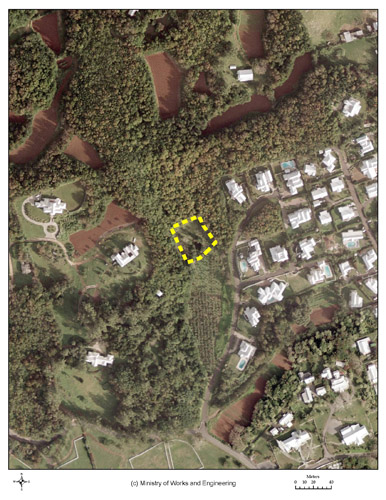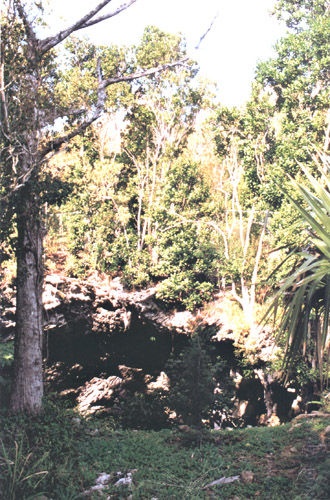Sears Cave
Sears Hill, Smith’s Parish
Acreage: 0.38 acres
Acquired:
Gift from the Trott family in memory of Sir Howard and Lady Trott, 1990
Special Features:
Access by appointment only
Some of Bermuda’s rarest ferns survive in this large limestone sink, once used as a garbage tip. It is now fenced off for safety reasons.
The limestone sinkhole was formed when the roof of a large cave chamber collapsed, exposing it to the elements. The resultant deep, steep-sided depression is an ideal habitat for ferns, being sheltered, shady and humid. Garbage dumped in the cave in the past has been removed, and the site is maintained as a botanical reserve for some of Bermuda’s rarest fern species, including the largest remaining colony of native Cave Fern (Ctenitis sloanei), a species found in only three other tiny locations on Bermuda. The Long Spleenwort (Asplenium heterochroum) is also present in small numbers. The larger Bermuda Shield Fern (Thelypteris bermudiana) and Sword Fern (Nephrolepis exaltata) are well represented. Recently, specimens of the extremely rare endemic Governor Laffan’s Fern (Diplazium laffanianum) have been planted here.
Bermuda’s only resident breeding bird of prey, the Barn Owl (Tyto alba) has been known to roost and possibly to nest in the cave. At present, a wild hive of honeybees (Apis mellifera) make their home in the upper reaches of the cave.


